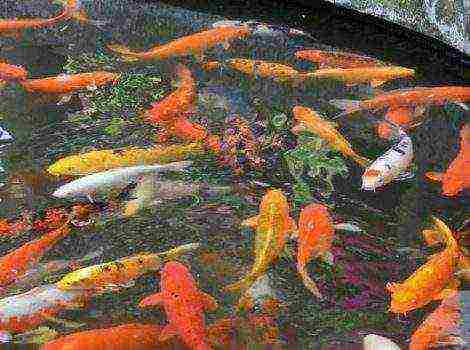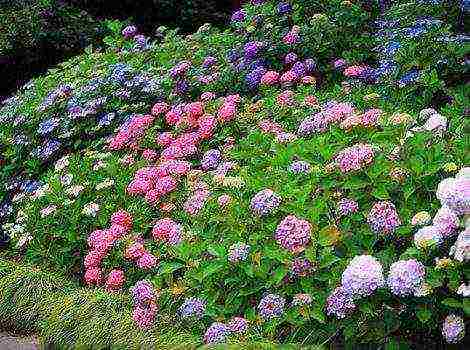Content
- 1 Preparation for planting black currant
- 2 Planting and watering
- 3 Top dressing and pruning
- 4 Destruction of pests
- 5 When is it better to plant black currants
- 6 Where to plant a seedling
- 7 Black currant bush: planting and care, scheme, distance
- 8 What to plant next to
- 9 How to plant correctly
- 10 Transfer to a new location
- 11 Types of currants
- 12 Correct fit
- 13 Currant care
- 14 Top dressing and pruning
- 15 Pest control
- 15.1 Purchase of black currant seedlings
- 15.2 Placing black currant bushes in the garden
- 15.3 Preparing a home for black currant
- 15.4 When to plant black currants
- 15.5 Preparation of planting sites for planting black currant
- 15.6 Planting black currant seedlings
- 15.7 Proper soil care
- 15.8 Watering the black currant
- 15.9 Additional nutrition for black currant bushes, basic fertilizers
- 15.10 What liquid top dressing is needed for black currant bushes, and proper watering
- 15.11 Preservation of ovaries in black currant after flowering
- 15.12 Black currant pruning and shrub formation
- 15.13 Breeding methods for black currant
- 15.14 Reproduction of black currant by lignified cuttings
- 15.15 Reproduction of black currant by horizontal layering

Foreword
Growing currants in a summer cottage does not require much effort. Nothing complicated - planted, watered, harvested. But if you want not just to grow a berry bush, but to get a solid harvest of fragrant, sweet and insanely healthy berries, you should learn some secrets of caring for this bush.
Preparation for planting black currant
It is better to plant future bushes in the fall, at the end of September or at the beginning of October. Then in the spring they will immediately grow.
Step 1Choosing a dry and well-lit place.
We choose a dry and well-lit place where the currant bush will not bother you and, at the same time, will grow well. An open sunny area is suitable for this, even near a fence. If only the water does not stagnate there, and there is no thickening of vegetation. Currants can bear fruit in partial shade, but the berries will not be very large. Therefore, you need to plant it also away from tall trees or on their southern side.
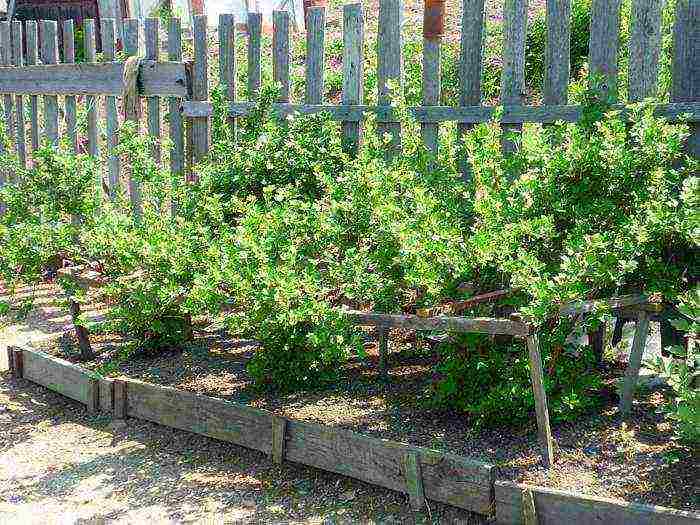
Step 2Clearing enough space.
It should be borne in mind that an adult currant bush can grow up to 200 cm in diameter, so it is not advisable to plant it close to the fence or to the beds.
Step 3Correct the acidity of the soil.
These berries love a slightly acidic (almost neutral) environment. If the acidity in this area is increased, then it can be reduced by adding ash to the planting pit.
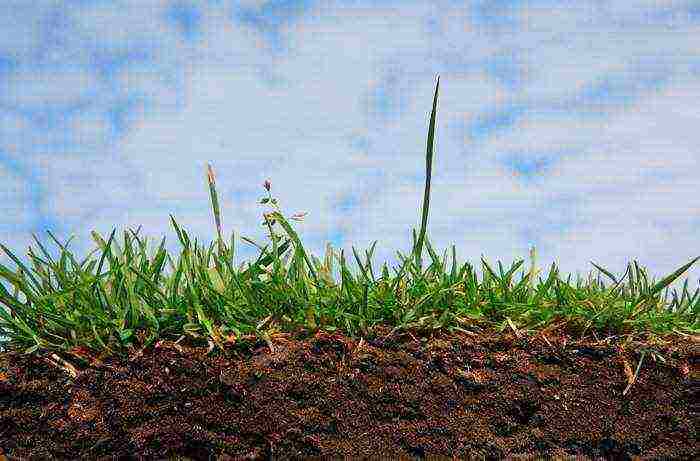
Step 4We mark the territory.
All varieties of currants are practically self-pollinated, but to increase the yield and size of berries, it is better to plant bushes of different varieties next to each other (at a distance of about 150 cm or a little more), so that their mutual pollination occurs.
Planting and watering
In the future, we water the bush as needed, but we must remember that currants are a moisture-loving plant. In dry weather we do not regret water, especially during the period of berry growth and before winter. For 1 adult bush for one watering, at least 2-3 buckets should go.
Top dressing and pruning
Cultivation of black currant is impossible without top dressing. If this is not done, then the berries will become smaller. Therefore, every spring you need to apply fertilizers containing nitrogen (from 40 to 50 g per bush), and in autumn fertilizers containing potassium (from 30 to 40 g per bush) and superphosphate (from 100 to 120 g). Instead of nitrogen fertilizer, you can feed it with humus (from 10 to 15 kg per bush).
How can you grow currants and hope for a good harvest of berries, forgetting that, starting from 5-6 years, the bush needs to be rejuvenated. To do this, every year (in spring or autumn) we inspect the entire bush and cut out the old, fruiting branches, leaving, at most, 1-2 of them.
If over the summer our currant bush has grown a lot, then we remove excess shoots, leaving no more than 15 branches of different ages. This is done because the best harvest occurs on the branches of 4-5 years of the life of the bush. We also remove all dried and diseased branches.
Destruction of pests
Unfortunately, such varieties of black currant have not yet been bred that would not be attacked by pests. To get a good harvest of berries, bushes must be protected, and even better, if possible, protected. And it is better to use simple home remedies, it will be much more useful than all currently produced "chemistry".
- For example, to exterminate aphids, you just need to dip the affected branches in a solution of washing powder or soap. Alternatively, use a decoction of ash (wood) - for 1 bucket of ash 300 grams. We simply spray adult bushes with these solutions.
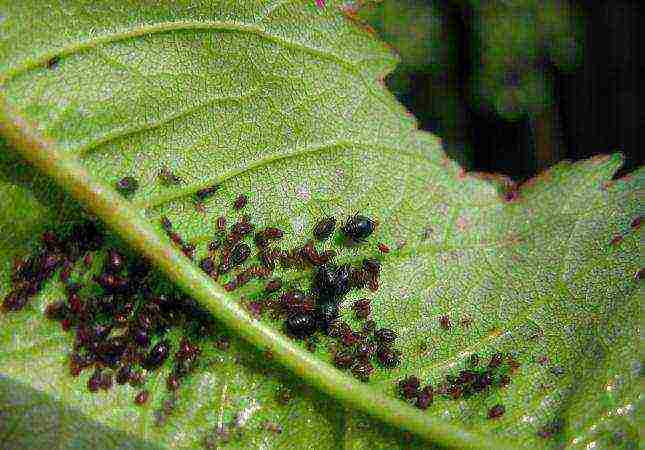
- To protect against fireballs (green caterpillars) in the spring, before budding, you need to well mulch the soil around the bush with compost, moss or sawdust (thick layer). Lining the ground with plastic wrap also helps, from under which caterpillars wintering in the ground will not be able to break through and die there.
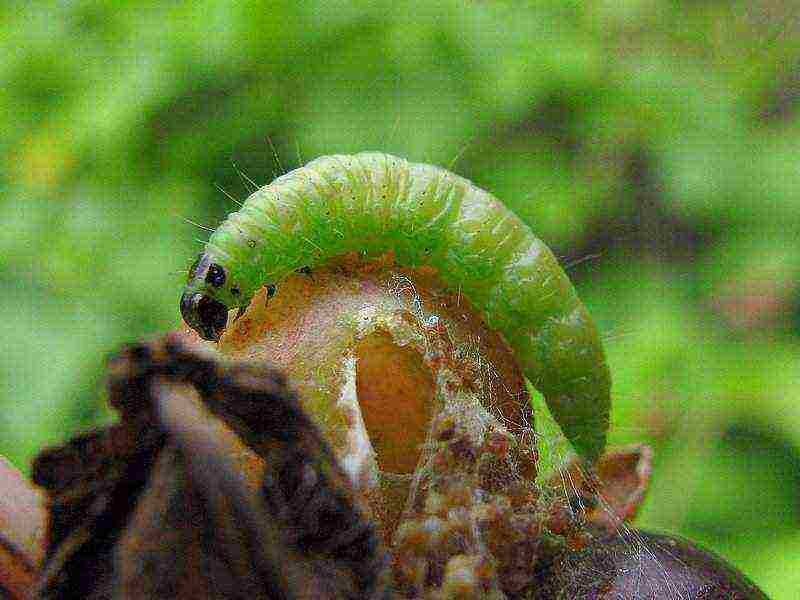
- There is also such a pest as glass. She gnaws stems from the inside. If the tips of the branches begin to dry, then they need to be cut off completely, completely, to the very base, since the glass has settled there and cannot be removed otherwise. To do this, we also delete all old branches, they can also be infected. After such scraps, the glass case will soon leave the area alone.
Currants use love for a reason. It is truly a storehouse of vitamins, minerals and nutrients. The berry improves immunity and strengthens the cardiovascular system. And finally, this is just a wonderful delicacy with a gentle sourness and an indescribable aroma. Therefore, it can be seen in every garden area. But not everyone can boast of a high harvest. How to plant black currants so that they bear fruit? What should be considered when choosing a place and time for boarding?
When is it better to plant black currants
There is an opinion that currant is an unpretentious plant, it will take root in any conditions, and you can plant it at any time of the year. This is partly true, but taking root and bearing fruit are two different things. In order for the plant to give a good harvest, you need to observe simple, but mandatory conditions.
The first of them: it is better to plant a bush in the fall. Drop-off times vary by region. The best option: end of September - mid-October. It is important that the seedlings have 3–3 weeks in reserve before the onset of frost. During this time, the plant will restore its root system and will be ready to overwinter. By spring, the soil at the roots will be compacted, which will give them the opportunity to receive nutrition in full.
Spring planting will require more trouble, and the berry itself is tolerated a little worse. In the spring, it is advisable to plant in places where the snow cover is shallow, and there is a danger of freezing the roots. Currants are planted in April, as soon as the snow melts. The thawed soil layer should be 20 cm. The wetter the soil is during spring planting, the better the seedling will root. The currant wakes up early, it is necessary to plant it before the buds bloom.
Where to plant a seedling
When choosing a permanent location, the following parameters are taken into account:
- soil composition,
- a place,
- illumination,
- predecessors and neighbors.
Soil composition
Currant prefers fertile black soil, grows well and bears fruit on sandy loam or medium loamy soils. The soil can be improved to match the requirements of the bush. Organic matter is added to sandy loam, organic matter and mineral fertilizers are added to loamy. The acidic soil is limed. To do this, in the fall, when digging, slaked lime is introduced at the rate of 40 kg per hundred square meters. Moreover, it is important to know that excess lime is harmful to the soil.If the earth is not dug up, then local cultivation is carried out: they make wide planting holes and fill them with fertile soil with humus and add 200 g of ground limestone.
A place
For berries, areas that are lit and protected from the wind are preferable. Avoid areas where groundwater is more than one and a half meters from the soil surface. A leveled area or a gentle slope with a slope to the west or northwest is suitable for her. Lowlands are not suitable for black currant.
Illumination
Black currant is a light-loving plant. It can also grow in light partial shade. In this case, the berries will be larger than on bushes growing in sunny areas, but noticeably sour in taste.
Predecessors and neighbors
To avoid contamination, the berry is not planted in areas previously occupied by raspberries, gooseberries or currants. The rest of the fruit, berry or vegetable crops can be good predecessors.
Avoid sea buckthorn, raspberries, gooseberries and cherries. The roots of the sea buckthorn spread out to 10 meters and are located shallowly, on the same level with the roots, so the sea buckthorn and currants will fight for moisture and nutrition. Raspberries and cherries grow very quickly and drown out the bush. They have a common enemy with gooseberries, the gooseberry fire, so to prevent infection, it is better to plant the berries further away. Do not plant currants in the immediate vicinity of trees, especially pine or walnut. The fact is that the pine acidifies the soil. Walnut, on the other hand, inhibits all vegetation nearby.
It is good to plant several varieties side by side: inter-pollination increases productivity. Due to cross-pollination, the number of ovaries increases, and the berries become larger.
Black currant bush: planting and care, scheme, distance
The main rule when placing bushes on the site is simple: it is necessary to plant so that the plant is comfortable, and at the same time it is convenient to pick berries.
Currants need space. Remember that it should be separated from fruit trees by at least 2.5 m.When planting in rows, leave a row spacing of 2 to 3 meters, in a row, leave at least one and a half meters between the bushes. With a shorter distance, the bushes will interfere with each other, and the yield will noticeably decrease. In addition, the life expectancy of the bushes is also reduced. If you plan to plant currants along the fence, do not save space, step back one and a half to two meters from the fence.
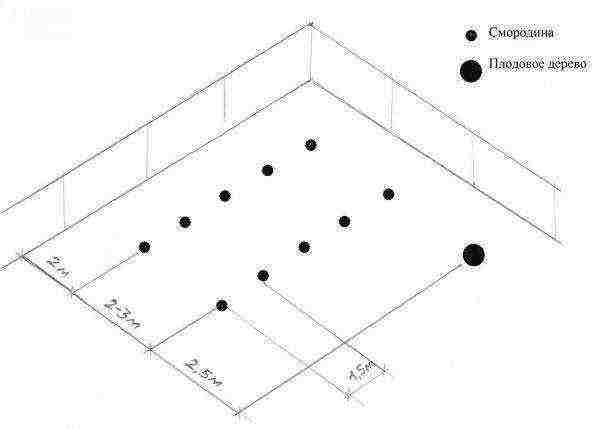
Planting scheme of black currant in rows
What to plant next to
Three neighborhood rules are universal for everyone in the garden:
- Do not plant nearby crops if they are of the same species or feed on the same nutrients.
- When planting at different levels, consider whether low-growing plants are shade-loving. If a low-growing plant is photophilous, do not plant it under a high one.
- Take into account the depth of the location of the roots and keep in mind that the roots are able to protect their territory with the help of phytotoxins.
Guided by these rules, we will determine which neighborhood is useful and which plant will oppress.
Invalid neighborhood
For black currant, the neighborhood with sea buckthorn, raspberries, apple trees, cherries is unacceptable. The neighborhood has a bad effect on pear and cherry. Red currants should also be planted away from black currants.
Can be planted next to
Honeysuckle and hops are good neighbors. Garlic, calendula, Jerusalem artichoke get along with the berry. The ideal neighbor is onions. They do not interfere with each other, and the onions protect the currants from the kidney mite. Onions should be planted in the fall, this will provide protection for young shoots in the spring.
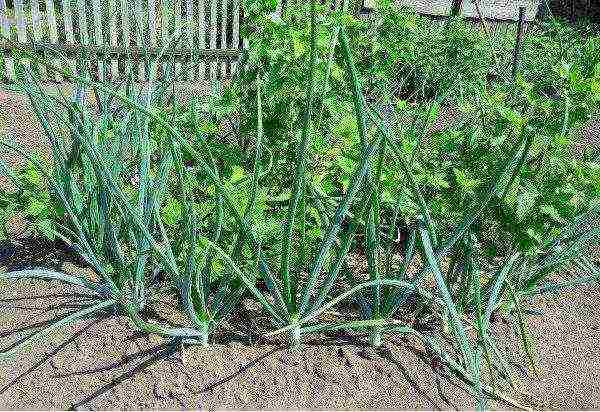
Onions protect young currants from kidney mites
How to plant correctly
Every gardener has his own secrets of success. But everyone agrees that success is determined by a number of factors, such as:
- the quality of the seedlings,
- correct disembarkation,
- follow-up care.
How to choose planting material?
First, choose better zoned varieties. They are better adapted to the conditions in your region and, with proper care, will yield a good harvest.
Secondly, you should choose high-quality planting material. For currants, these are annual or biennial seedlings. Saplings should be leafless, strong. Decisive when choosing is the absence of diseases and good condition of the roots. A healthy seedling has well-developed fibrous roots and 3–4 lignified skeletal roots 15–20 cm long. For a high-quality seedling, two or three shoots 40 cm long are sufficient. A healthy seedling has buds adjacent to the trunk, there are no spots.
If the kidney looks swollen, rounded, most likely, a kidney mite has settled there.
During transportation, do not overdry the roots of seedlings. To protect the roots, they need to be wrapped in a damp cloth or wrapped in foil.

Healthy annual blackcurrant seedling
Correct fit
Planting holes can be dug just before planting, but it is better to prepare them in advance, a couple of weeks before planting, so that the earth has time to settle and the chlorine introduced with the manure evaporates. Pit preparation:
- Choose a suitable bright spot.
- Dig holes 2 m apart. The planting hole should be about 60 cm in diameter and about half a meter deep.
- Pour humus into the bottom of the planting hole, filling the planting hole by a third. Add a glass of wood ash, stir.
Planting seedlings:
- Examine the roots. If there are any damaged, cut them off with a pruner.
- If you are using mineral fertilizers, cover them with fertile soil on top so as not to burn the roots with the fertilizer.
- Place a seedling in the hole, gently straightening the roots. The seedling should not be placed vertically in the planting hole, but at an angle of 45 ˚.
- Pay attention to the fact that the root collar should be located 6 cm below the edge of the pit. A deep, sloping planting contributes to the formation of a powerful bush: new roots will appear and the bush will grow in width due to new shoots.
- Sprinkle the seedling with earth, trying to fill the space between the roots. It is more convenient to plant together: one holds the seedling, the second pours the earth.
- Compact the soil slightly.
- Drizzle: half a bucket per hole. Thus, the earth is compacted at the roots. This is important for currants. She does not like the voids at the roots.
- Fill the hole with earth completely.
- Form a hole around the bush and water abundantly.
- Trim the freshly planted bush. Cut off as follows: 4–5 buds are counted from the ground, cut with pruning shears above the fifth. This will allow the seedling to grow new roots and produce many healthy, strong shoots in the spring.
The cut pieces can be cut into cuttings and rooted. This will be a good planting material.
- Mulch the planting to avoid crusting.
- When planting in autumn for the winter, the bushes should be spud to a height of 12–15 cm in order to close the roots and protect them from freezing. In the spring to bother.
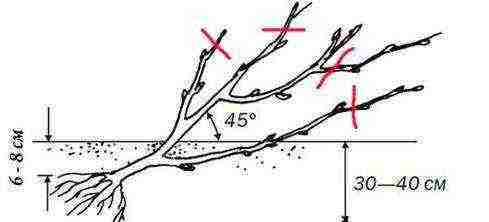
The correct position of the seedling when planting
Video: How to plant black currants correctly
Transfer to a new location
Sometimes it is required to transplant currant bushes to a new place. This need arises if
- you are moving to a new location,
- tall trees have grown in the neighborhood,
- the earth is depleted,
- you are planning construction on the site.
Transplanting a bush is slightly different from planting a seedling, but the principle is the same: to ensure root survival. Therefore, this should be done in the fall. And take into account that bushes older than 4 years are not suitable for transplantation. Procedure:
- Find a comfortable place: bright, sheltered from the wind.
- Free the land from weeds, dig it up.
- Prepare the pit. To immediately give the currants more supply of fertile soil, the hole should be dug wider, at least 70 cm in diameter and two bayonets deep. The pit is prepared 2 weeks before the transplant.
- Prepare nutrient soil: pour fertilizers, humus, ash into the pit.
- Prepare the bush for transplantation. Cut off old branches with pruning shears at the very base. Cut young shoots in half. Thanks to pruning, the bush in a new place will give strength to the restoration and growth of the root system and will not hurt.
- Dig in the bush with two bayonets deep and carefully remove it from the ground, trying not to damage the roots.
- Pour water into a prepared hole. The nutrient soil should become liquid in consistency.
- If the bush is sick, examine carefully and remove diseased roots, pests. Rinse the roots and hold in a strong solution of potassium permanganate.
- Lower the bush into a hole with liquid nutrient soil. Make sure that the root collar of the bush is 6–8 cm below the edge of the hole and cover with soil.
- Pour well with water and mulch. Watering will compact the soil at the roots, and mulch will prevent the soil from drying out and crusting on the surface.
Then they take care of them as usual: they water them abundantly, feed them and cut them off on time.
Video: How to properly transplant currants to a new place
In order for black currants to really bear fruit, you need to choose the time and place of planting correctly, choose high-quality planting material and prepare the soil. These simple planting rules will help you get a high yield of black currants in the future.
Download Original] ’class =" imagefield imagefield-lightbox2 imagefield-lightbox2-resizeimgpost-500-500 imagefield-field_imgblogpost imagecache imagecache-field_imgblogpost imagecache-resizeimgpost-500-500 imagecache-field_imgblogpost-resizeimgpost-500-500 ″>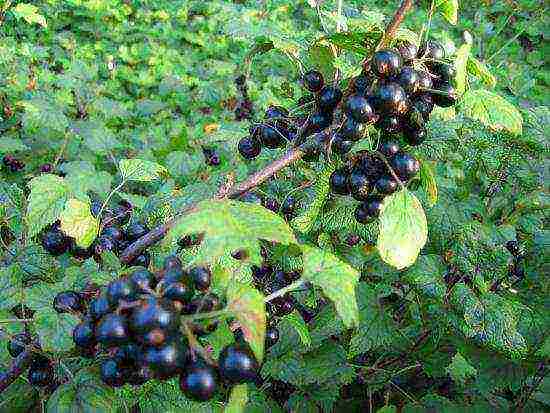
Currants are one of the healthiest garden berries. It is rich in vitamins and minerals. The plant is distinguished by its unpretentiousness and endurance. And yet, in order to get a rich harvest, you need to know how to plant currants, take care of them, and prepare them for winter. Armed with all the information you need, you can achieve excellent results.
Content:
- Types of currants
- Correct fit
- Currant care
- Top dressing and pruning
- Pest control
Types of currants
Breeders have bred many types and subspecies of currants. Modern hybrids have improved characteristics: they are resistant to diseases and pests, and are capable of producing a rich harvest.
The main types of currants:
- White
- Red
- Black
Each species, in turn, is subdivided into several more varieties with individual characteristics. The most whimsical of the presented species are black currant varieties.
Juicy black currant berries have a sweet and sour taste. Red currant is distinguished by its unpretentiousness and high yield. White currant is also unpretentious, it belongs to late ripening varieties.
Correct fit
If you choose a good place for planting, then the currants will grow and bear fruit in one place for about 15 years. Non-shaded areas are suitable for this plant, if the bush is planted in the shade, the berries will be less sweet, this will also affect productivity. Currants love moisture, they are suitable for areas where there is a long stagnation of water.
This means that the groundwater must be located 1.5 meters from the surface of the earth. For planting, it is preferable to choose the autumn period. It is necessary that the plant has time to take root before spring.
Currant seedlings are of two types:
- annuals - low, with a well-developed root system
- biennial - have a more developed form
Experienced gardeners recommend opting for annual seedlings. When choosing seedlings, take into account the following points:
- healthy appearance
- well-developed fibrous root system
- moist roots
- flexible shoots of light gray color
- there are 2 or 4 shoots
For the seedling, a planting hole is required, the width of which is 40 cm, and the depth is not more than 40 cm. The seedling is planted at an inclination of 40 degrees, to a depth of about 8 cm. If the soil is sandy loam, you will need to put clay on the bottom. The thickness of the clay layer should be about 7 cm.
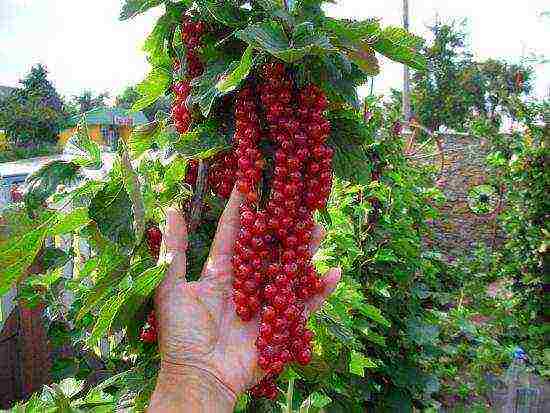
The soil is placed in the pit, which is pre-mixed with fertilizers. The procedure for planting a seedling is as follows:
- the seedling is placed in the prepared hole
- straighten the roots
- cover the soil, compact it
- watered
- mulch with manure or peat
If there are several bushes, it is required to maintain a distance between them. Up to 1.25 meters between bushes and up to 2.5 meters between rows.
Currant care
Currants love moisture. Therefore, you need to ensure that the soil is always moist and loose. The soil will need to be loosened every three weeks. This is done carefully so as not to damage the roots, the optimal loosening depth is 6 - 8 cm.The procedure for caring for the plant includes the following steps:
- bushes need to be weeded periodically
- to retain moisture, the soil around the bush should be mulched
- currants must be watered (15 liters under a bush), especially young seedlings, with a lack of moisture, the berries can crumble, and the berries that are not crumbled will be very small
- spring frosts will damage the plant and negatively affect the harvest, in order to avoid this, on the eve of frosts, the bushes are wrapped with cloth, film or paper, and containers with water are placed under them, for large areas, smoking is suitable by making a fire
- so that the branches do not spread on the ground, a support should be built for them, it can be made from improvised means
Feeding is a special item in the care. The plant requires organic and inorganic fertilizers. With proper care, currants will begin to bear fruit 5 years after planting.
Top dressing and pruning

The first two years after planting, the currants can not be fed, since the fertilizer that was introduced into the pit during planting will be enough for it. From the third year, you need to fertilize the plant annually.
Every year they bring under the bush:
- compost (5 kg)
- superphosphate (20 g)
- potassium sulfate (20 g)
- Then the soil is loosened
In the spring, the bushes begin to actively develop, in order to help them, root top dressing is introduced. For its preparation, manure is bred - 1: 8 or bird droppings - 1:10. They form grooves and pour in fertilizer there at the rate of: 2 buckets under the bush. Then the grooves are sprinkled with earth and leveled. You can use ready-made dressings that are sold in stores.
Pruning
The currants need to be trimmed. Branches are subject to deletion:
- sick
- broken
- old branches that are more than 5 years old
- intertwined
- damaged by insects
Removing weak and old branches will allow new healthy branches to grow in their place. Pruning affects the uniform formation of the berries and their flavor. Pruning is carried out in the spring, as soon as the snow melts, and the buds have not yet blossomed. Currants are susceptible to attack by the following pests: mites, aphids, powdery mildew. Currants must be protected from these insects and diseases.
Pest control
Pests and diseases reduce yields and can even destroy the plant. Most often, aphids start on currants. To eliminate it, the branches of the plant are treated with soapy water. To eliminate parasites, you can prepare a solution from ash.
A bucket of water requires 300 grams of ash. In special cases, the bushes are treated with "karbofos".
It is not recommended to use chemicals on currants, this is done in rare cases. Kidney mite is the smallest insect that enters the kidney and infects it from the inside. The affected branches are cut and burned. With proper care of currants, a rich harvest of berries is ensured.
Video about the correct planting and caring for currants:
Immediately after harvest, old lean branches and root shoots that thicken the bush should be removed. Then carry out sanitary pruning of dry, sick, broken shoots and branches. Then only detailed trimming will remain for the spring.
Horticultural experience has shown that the best way to protect currants from frost is by spraying with water. At the same time, not only the bushes themselves are abundantly irrigated, but also the soil under them. Spraying is carried out in the evening and at night, and several times. As a result, the leaves and brushes are covered with a crust of ice, when thawed, heat is released, saving the flowers from damage.
The first 2 years after planting, the currants have enough phosphorus and potassium from the filling mixture laid in the planting pit. Therefore, in early spring, it is fed only with nitrogen fertilizers (40-50 g of urea per bush). They are brought under the bush along the projection of the crown, immediately closed up, then watered without fail.
When the roots are backfilled, but the hole is not yet completely filled, the seedling is watered, spending about half of the bucket. Such watering is necessary not only for moistening, but also for a tighter adherence of the soil to the roots. Then the hole is completely filled up, a hole is made around the bush and another half of a bucket of water is poured into it. For a longer preservation of moisture, the hole is filled (mulched) with compost, peat, or simply dry soil.
If you did not manage to plant on time or could not resist and bought a new variety late - do not rush to plant immediately. Better dig it in before spring.
After planting all the bushes, the land around the trunk is mulched with rotted foliage, humus, compost, peat. This procedure will prevent the formation of a crust and retain the moisture necessary for rapid rooting of currants.
When planting in autumn, the soil around a young plant should be mulched with fallen leaves, peat, compost or rotted manure. Mulch will retain moisture in the ground and protect young currants from freezing of the root system on frosty days.
If you want to know how to plant currants correctly, then you need to first choose a suitable location. The main requirement for the soil is its permeability.
To replace old fertile blackcurrant bushes, gardeners can grow seedlings themselves. Especially if high-yielding plants with large berries grow in the garden. Of these, for reproduction, bushes should be selected without signs of disease or damage by pests (terry, kidney mites, glass, stem gall midge are especially dangerous).
Some gardeners cover the bushes with burlap, non-woven materials, and plastic wrap during frosts. This is also a good way to protect yourself. But it is best to combine spraying and cover.
In the 3rd year of life in the garden, in addition to spring nitrogen fertilization, in the fall, 4-6 kg of organic fertilizers, 40-50 g of superphosphate and 10-20 g of potassium sulfate are applied under the bush.
In dry weather, especially in late spring, new plants are also watered, followed by soil mulching. In autumn, the roots are protected from winter freezing. To do this, in the second half of October, they first spud soil to a height of 10-12 cm, and then cover the near-trunk circle with peat or compost with a layer of 5-6 cm.
Check out the new article on planting blackcurrants in fall with cuttings.
In areas where there is little snow in winter, it is better to plant young bushes in early spring. Planting material purchased in the fall can be buried in the ground. Such seedlings in early spring are shaded or cut short in order to prevent rapid bud break. The currants are planted in a permanent place after the soil has completely thawed. The best period for planting currants is early April - May. Plants planted later take root less well and greatly inhibit development.
Most often, young seedlings of this berry culture are planted in September. At the same time, young plants have time to take root quickly.
The site can be either with a slight slope, or even. When planting currants, the "needs" of black, white and red currants must be taken into account separately.
Reproduction of black currant by lignified cuttings is the most affordable and simple way. Cuttings are best harvested and planted in early autumn, in the second or third decade of September, or, in extreme cases, no later than mid-October.
Of the berry bushes, perhaps the black currant needs pruning the most. The first time it is carried out immediately after planting the seedling for the correct formation of the bush.Cut off about half of each shoot, leaving no more than four well-developed buds. This is in order to induce the appearance of strong lateral ramifications.
Starting from the 4th year, the urea dose is reduced, leaving 20-40 g. Moreover, it is now applied in two doses, that is, two-thirds are given in early spring, and a third - soon after flowering. If nitrogen fertilizers are further fed annually, without changing the dose anymore, then the frequency of use and the amount of organic, phosphorus and potassium fertilizers depend on the composition of the soil. On loamy, sufficiently fertile soil, these fertilizers are applied once every 2-3 years (preferably in the fall, but also in the spring). 15-20 kg of organic matter, 120-150 g of superphosphate and 30-40 g of potassium sulfate are used per bush.Due to the fact that black currant is a moisture-loving culture, the soil around the bushes and between them must be kept in a loose, moist and, of course, weed-free state. Why the earth is loosened every 2-3 weeks to a depth of 8-10 cm.... Before frost, the currant seedling will have time to heal the wounds on the roots and with a restored root system it will overwinter normally. Spring planting is also possible (no later than the beginning of May), but its black currant tolerates worse than autumn.What are the best ways to determine the quality of the planting material?
Autumn is different, both dry and warm. Remember that a young seedling needs water. In order for it to successfully settle in a new place, keep the ground moist.
It is not necessary to make a deep planting hole - the currant has superficial roots. Size 40 by 40 cm, one and a half bayonet shovels in depth. Pour humus, sand and ash into the hole, mix with the ground and pour out one bucket of water, let it be absorbed.
When planting currants in spring, the preparation of pits and the entire process of planting seedlings are carried out, as in the autumn planting. Pour 2 tbsp into the landing pit. tablespoons of superphosphate and potassium salt (can be replaced with two glasses of chopped wood ash). Compost or humus is poured at the bottom of the pit. Mix the earth with this mass using a shovel. After planting, all branches are cut short, making a cut above the healthy buds. Currants are watered every 2-3 days. Novice gardeners need to know that black currant tolerates spring planting somewhat worse than autumn planting.
When to plant currants in the Moscow region? The best time to plant this crop is the end of September - the first half of October. At this time, the buds have already entered a dormant phase, for example, black currants can withstand a slight darkening, but at the same time they do not tolerate drought at all. Therefore, it can be planted in the lower or middle part of the slope. But red and white currants, on the contrary, prefer illuminated areas. But the spring version is much worse than the autumn one, since the planting time is also limited (the cuttings need to be planted in slightly thawed soil, in fact, directly into the mud), and the time for better rooting (before bud break).
Well-developed annual shoots about the size of a pencil are cut into cuttings from 2-4-year-old branches. The leaves are removed, and the shoot is divided into parts 12-15 cm long, so that each has 5-6 buds. The uppermost (unripened) part is discarded. The upper cut is made above the kidney, and the lower one is made below it.
Sometimes little root shoots are formed. In this case, they should be handled with care and the growth of new ones should be encouraged. To do this, cut out 1-2 perennial branches, even if they bear fruit, spud the base of the bush with earth to a height of 10-15 cm.
Purchase of black currant seedlings
On light sandy and sandy loam soils, fertilizers are used annually, and in spring. 4-6 kg of organic matter, 40-50 g of superphosphate and 10-20 g of potassium sulfate are introduced under the bush.
In autumn, heavy loamy soil is dug to a depth of 10-15 cm in the near-trunk circle, 15-20 - between bushes and rows. In order to better absorb moisture and retain snow in winter, earth clods are not broken.If the soil is light and not very compacted, on the contrary, it is not dug up, but loosened to a depth of 10-15 cm.
Currants are planted in pits 30-40 cm deep and 40-50 cm wide or in the same trenches. When planting in autumn, they are dug up and filled with a nutrient mixture in advance (2-3 weeks) so that the soil has time to settle. For spring planting, places are also prepared in the fall.
After the purchase, it is important to bring the seedlings to the site safe and sound. Scrub the leaves, and so that the roots do not dry out during transportation, wrap them in a damp cloth and place them in a plastic bag. Remove the shelter in the garden and carefully examine the bushes.
Placing black currant bushes in the garden
The seedling, in principle, will not get worse - it will grow as usual. But new basal shoots will form poorly and wait longer for a lush bush.
Now our seedling can easily grow until spring.
Preparing a home for black currant
Like all currants, black also loves the sun, but grows well in partial shade. If we plant several bushes at once, then the distance between them is 1.2 meters. Think over your plantings so that you do not transplant adult plants later. Currants grow in one place for 30 years or more. With good care and anti-aging pruning.
The planting density of a given crop depends on the species and variety. When placing it, the fertility of the soil and the shape of the crown of the bushes are also taken into account. The most spreading and tall varieties are planted less often than currants of a more compact form. The spacing between the bushes should be 1-1.5 m.
When to plant black currants
As for how to plant grapes correctly, almost all types of soils are suitable for growing it, except for swampy and saline soils. Choose a place with good lighting for planting grapes. Even a slight shade can lead to a decrease in sugar content, and the berries themselves will become much smaller.For better rooting, cuttings are placed in water for a day, immersed in a third of the length. They are planted in a garden bed, placing it at a distance of 8-10 cm from each other, leaving 40-50 cm between the rows. Planted obliquely, approximately at an angle of 45 degrees. It is deepened so that 2 buds remain on top, and one of them should be at the level of the soil (Fig. 4). To avoid voids, the ground around the cuttings is squeezed and compacted. After planting, watered and mulched abundantly. In the spring, they are pruned and left in the garden for another year. Transplanted to a permanent place in the fall. Care consists in watering followed by mulching the soil. Sometimes in the spring there is a bulging of the cuttings, then after the ground has completely thawed, they are upset. They do this carefully, trying not to damage the kidneys.Formative pruning is completed in the 4th year after planting. A properly formed bush usually has 10-15 branches of different ages (about 2-4 each). At the same time, there are a couple of more annual branches, and fewer 5-6-year-olds. Simultaneously with the forming, sanitary pruning is carried out, removing dry, broken and diseased branches. Cut them out to the very bottom, leaving no hemp.
In addition to making basic fertilizers, black currants are given liquid dressings, which are combined with watering. Usually they are used during flowering (May), during the growth of shoots (May, June), when berries are poured (June) and immediately after harvest (August), when flower buds are laid.
Preparation of planting sites for planting black currant
Due to the lack of moisture in black currant, the growth of shoots slows down, and during the period of formation and filling of berries, they are crushed and shattered. Autumn drought can lead to freezing of bushes, especially in snowless harsh winters. Due to the fact that the roots of the currant are shallow, it is not able to water itself at the expense of groundwater, and needs watering.
When digging a hole or trench, the upper (fertile) layer is placed on one side, and the lower (subsoil) layer on the other. Then a filling mixture is prepared.The fertile layer is mixed with 8-10 kg of organic fertilizer and 200-250 g of any complex mineral fertilizer.
If the tips of the roots and shoots were damaged during delivery, carefully trim them to a healthy part. To prevent the seedlings from drying out, it is better to dig them in before planting. Or you can dip the roots in a clay or earthen mash. But in any case, the root system must be protected from direct sunlight.
Planting black currant seedlings
Bad landing site.
Now I'll tell you
Find out how close the groundwater is in your area. For many trees, shrubs and flowers, this is of great importance. Black currants do not like groundwater above one meter.
One of the main features of planting young currants is the deepening of the root collar of the seedling 6-9 cm below ground level. In this case, the planting material is placed in an inclined position.
But before planting strawberries correctly, you need to find soil on your site, which will be light in texture. Note that there should be no carbonates in the ground. Their high content will lead to poor fruiting of strawberries.
Proper soil care
You can immediately plant the cuttings in a permanent place. Then proceed as follows. In a place prepared for a new bush, 5-6 cuttings are planted in a circle at an equal distance from each other, observing the above rules. After rooting, 2-3 plants are left, which will become the basis of a powerful bush. The rest are dug up and used for planting elsewhere.
Pruning an adult fruiting bush is mainly rejuvenating in nature. First of all, aging 5-6-year-old low-yielding branches are identified and removed. It is easy to recognize them by their external signs. Old branches are thick at the base, their bark is dark brown, almost black. The annual growth at the ends of most of the branches is very weak, about 10-15 cm. Fruit branches, although numerous, are mostly dying and dry.
For top dressing, an infusion of mullein or slurry is used, diluting 3-4 times (a bucket of solution per bush); infusion of bird droppings, diluted 8-10 times (half a bucket-bucket of solution per bush). Sometimes it is difficult to get natural organic fertilizers, in these cases you can use ready-made preparations from the store, for example "Barrel and 4 buckets", "Tops-roots", etc. Or use weed infusion.
Watering the black currant
It is often not necessary to water the currants; it is enough to do this several times per season: during the growth of shoots and the formation of ovaries (late May - early June), when pouring berries (June), after harvesting (August-September). If autumn is dry, winter watering is needed (end of October).
When they begin to fill the hole, they first pour the filling mixture (about a third of the volume), and then the fertile soil. Then the root system of the seedling will be protected from burns that happen when fertilizers fall on the roots.
It is better to plant black currant bushes in low, moderately moist, sunlit and protected from the wind areas. They are often planted along the fence. This is not a bad option. It is advisable to place only bushes, departing from the fence by 1 m. You can plant black currants between young fruit trees. In this case, the distance from the tree to the bush should be at least 2 m.
Avoid planting in the shade. No swampy lowlands, close groundwater, long standing melt or rainwater.
Additional nutrition for black currant bushes, basic fertilizers
About common mistakes when planting black currants in the fall
Planting black currants in the fall begins at the end of August, but if it is still hot and dry, then postpone this matter. Autumn is rainy - you can start early. Until the end of September, you can safely engage in planting.Later, you need to look at the weather, if frosts are not expected for another month - plant.
Thanks to this method of planting, a spreading bush with a wide base is formed faster. Also, the inclined position of the seedling contributes to the formation of additional roots and shoots. If the gardener wants to get a standard currant bush, then the seedling is planted without deepening in an upright position. In such plants, the renewal of shoots will be rather weak.
The soil needs to be well moistened, but at the same time, make sure that there is no excessive excess moisture. Be careful that groundwater does not lie close to the surface. If they are found, then such a site for growing strawberries will not work.
Reproduction of black currant by horizontal layers is also a simple and affordable way to get black currant seedlings. But it is only suitable for young 3-5 year old plants.
Of course, when deleting branches, not only their age is taken into account, but also their condition. If the old branch is well developed, well located, has strong growths with large flower buds, then it can be left for another year. Conversely, if a young branch is poorly developed, shaded and there are few fruiting buds on it, then it is cut out.
What liquid top dressing is needed for black currant bushes, and proper watering
With liquid mineral dressings, 10 g of nitrogen and potassium fertilizers and 20 g of phosphorus fertilizers are dissolved in a bucket of water (consumption per bush).
Watering black currants, the soil is moistened to a depth of 30-40 cm, spending 3-5 buckets per 1 m2 of soil surface.
In the planting hole, the seedling is placed in an inclined position, approximately at an angle of 45 degrees, and slightly deeper, so that the soil level is 5-6 cm above the root collar. With such a planting, additional roots are better formed, more new basal shoots appear, which means that a more powerful, durable bush with a wide base develops. Whereas with a direct planting, a standard bush is formed with one or two skeletal branches and a shorter lifespan.
The distance between the currant bushes depends on the variety: spreading ones are planted after 1.5 m, straight-tall ones - after 1. When planting in rows, row spacings are made 2-2.5 m wide. This distance is quite enough for a passage between plants when working the soil, garter bushes, spraying, harvesting and other work. When choosing a place for currants, keep in mind that vegetable, fruit and berry crops (except for the currants and gooseberries) are good predecessors.
Preservation of ovaries in black currant after flowering
Landing in the fall in a mound.
.
Currants need to have time to take root before winter
Black currant pruning and shrub formation
Before planting currants, it is necessary to prepare the planting pits. Their size should be 40x40 cm or 40x50 cm. Compost or rotted humus is poured at the bottom of the pit. All the roots of the seedlings are straightened. Then they are evenly sprinkled with soil, carefully compacting it. It is recommended to periodically shake the seedlings so that it completely fills the voids around the plant's root system.
Many novice gardeners are wondering when to plant currants? Experts say that this berry culture can be planted both in spring and autumn. At the same time, young seedlings develop equally well, and begin to bear fruit actively after 2-3 years.
In early spring, under the bush, the soil is loosened and fertilized. Then shallow grooves (10-15 cm) are made along the radius and 1-2-year-old shoots are laid in them. Pinned tightly with hooks in several places. When the buds wake up, sprinkle with soil, leaving only the tops on the surface. After some time, vertical shoots will appear from the ground. When they reach 10-15 cm, they are hilled with loose and moist soil, after 2-3 weeks the hilling is repeated. During the summer, the soil with layering is abundantly watered and mulched with compost, peat or other organic matter.
They also take care of the further renewal of the bush. To do this, select and leave strong, evenly spaced annual basal shoots, about 4-6 pieces. All the rest are cut out.
In June-July, foliar feeding with microelements is useful for black currants. On a bucket of water take 5-10 g of potassium permanganate, 2-3 - boric acid, 30-40 g of copper sulfate. Each drug is dissolved separately, and then the solutions are mixed and sprayed on the bushes.
Water is poured into grooves 10-15 cm deep, which are dug around the bush at a distance of 20-30 cm from the end of the branches. This is the best option, but can be sprayed in furrows along the row. In case of severe drought, after watering, it is advisable to arrange a control measurement. If the soil is moist at a depth of a little more than a shovel's bayonet, it means that the currants have received enough water.
In the planting pit near the seedling, the roots are straightened and covered with soil, gradually compacting it.
In the area set aside for currants, all the pits and depressions are first filled in so that the place becomes even. Then the soil is dug to the depth of the shovel bayonet. Fertilizers are applied for digging, using per 1 m2: 3-4 kg of organic, 180-200 g of any complex mineral. The latter can be replaced with 100-150 g of superphosphate and 20-30 g of potassium sulfate (or 100-200 g of wood ash).
The root system will not be protected from frost with this method. In a low area, organize a drainage system, water drainage. Dig grooves along the excess water drainage area. You can make additional drainage from sand, stones, shards at the bottom of the planting pit so that the water does not stagnate at the roots.
Breeding methods for black currant
Late planting dates.
Reproduction of black currant by lignified cuttings
, In order to winter calmly and start growing immediately with warmth in spring. She wakes up early in the spring.
After filling the hole by 2/3, produce abundant watering (0.5 buckets per hole). After completely filling the planting hole and compacting the soil, the seedling is watered again (0.5 buckets).
Any types and varieties of currants can be planted in the fall. During the winter, the land around the young bush will settle and compact well. Such bushes grow early in the spring and develop well in a new place.
In the fall, the layers are separated from the bush. Well-developed and fully rooted plants are planted in a permanent place, while the weak grow in the garden for another season.
The best time for pruning currant bushes is considered the early spring period before bud break. However, in currants, they start growing very early and can bloom in late March - early April. And since pruning takes a long time, often gardeners do not have time to complete it in the spring. Therefore, it is better to do most of the pruning in the fall, the more it can be done until the onset of stable cold weather.
Reproduction of black currant by horizontal layering
Very often, after flowering, the ovaries crumble in black currants. The main reason for this is the spring return of cold weather, which occurs at the beginning of May, when flowering occurs, and sometimes at the beginning of June, when the ovaries are formed.
Black currants lack nutrients in the soil. Therefore, throughout her life she needs to be fed.
In this case, the bush is periodically shaken. Then the soil will evenly fill all the space between the roots and there will be no voids.
Black currant tolerates high soil acidity worse than other berry bushes. To lower it, liming is carried out. To do this, lime (300-500 g / m2) is added under the digging.

